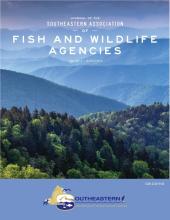Herbicides are Effective for Reducing Dense Native Warm-season Grass and Controlling a Common Invasive Species, Sericea Lespedeza
Practices within the Conservation Reserve Program promote planting native grasses and forbs to improve habitat for northern bobwhite (Colinus virginianus) and other wildlife. However, native grasses often become dense and stands can be invaded by undesirable plant species that reduce habitat quality. We investigated three herbicides (clethodim, glyphosate, and imazapyr) at two rates to reduce native-grass density and five herbicides (aminopyralid, fluroxypyr+triclopyr, glyphosate, metsulfuron-methyl, and triclopyr) at two rates to control sericea lespedeza (Lespedeza cuneata), a common...
